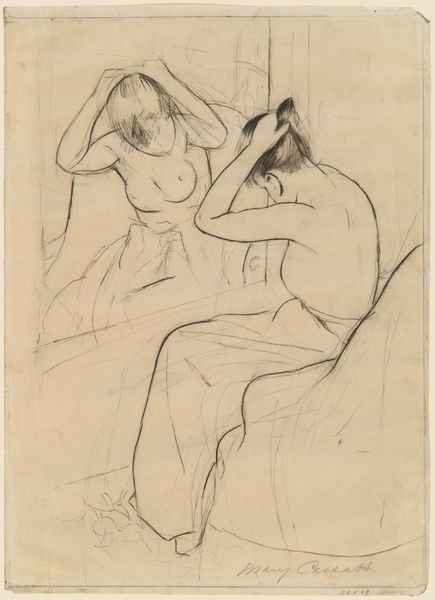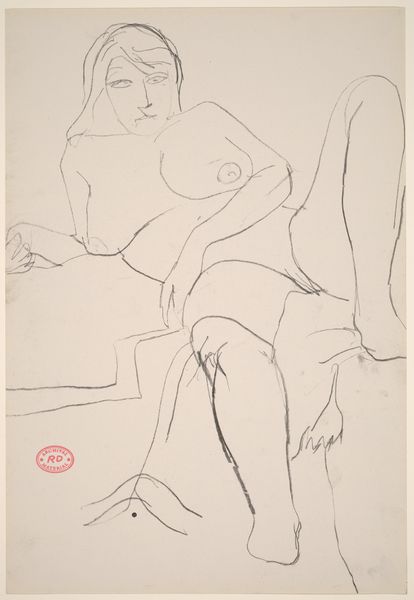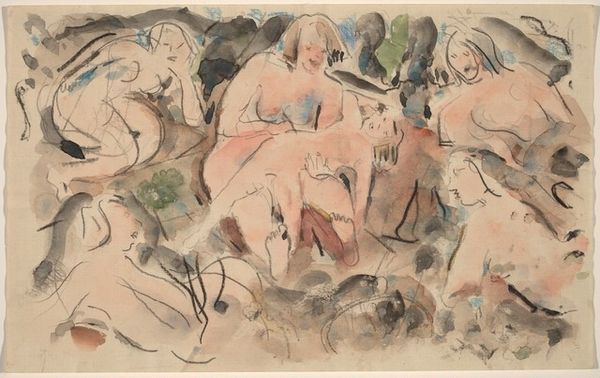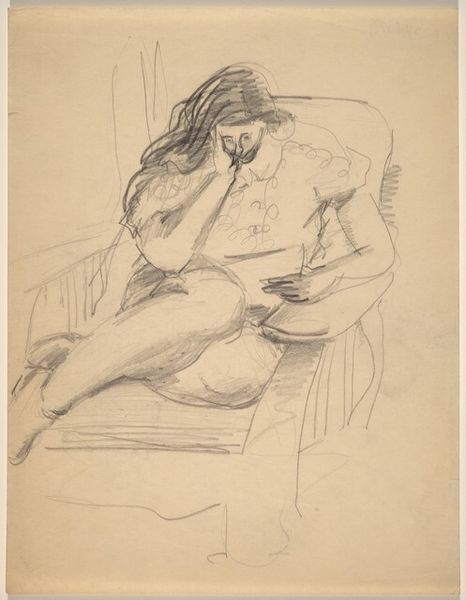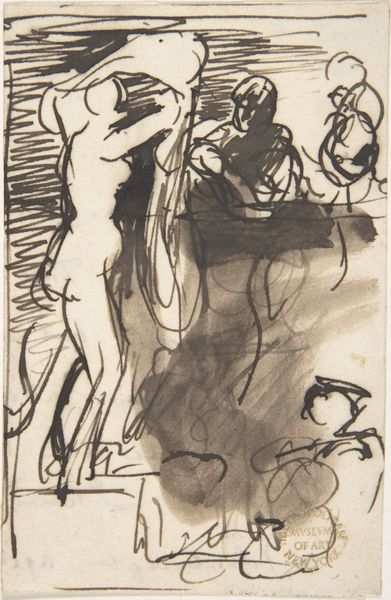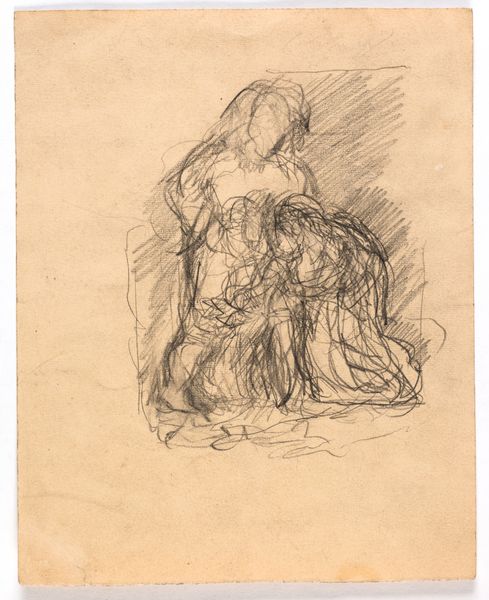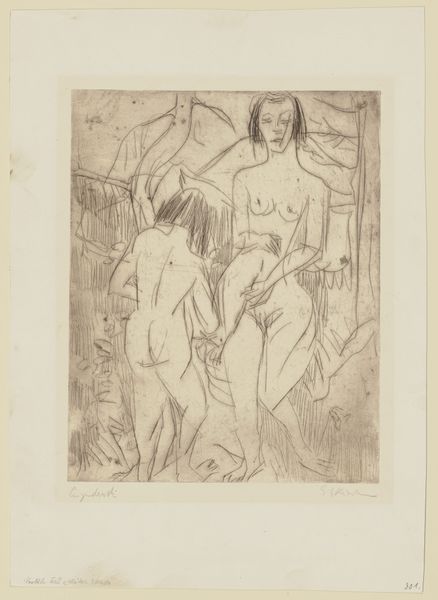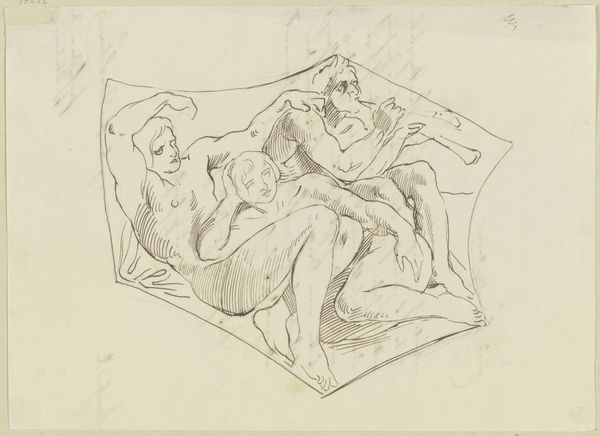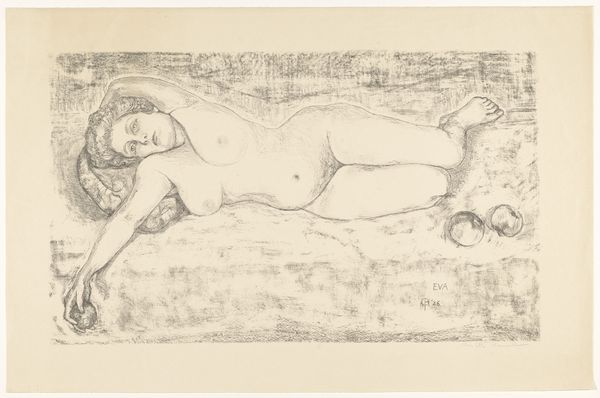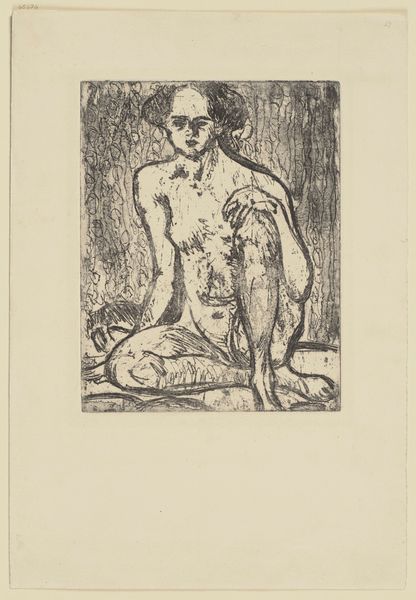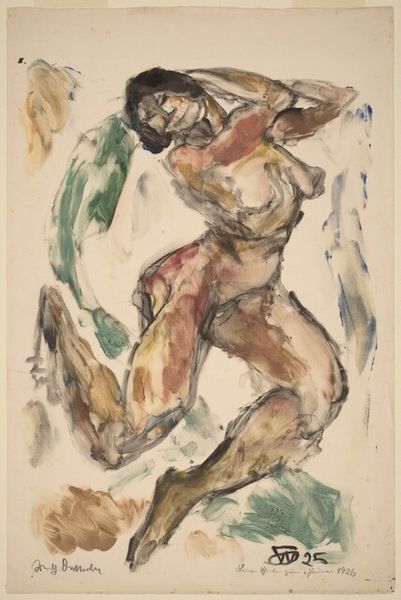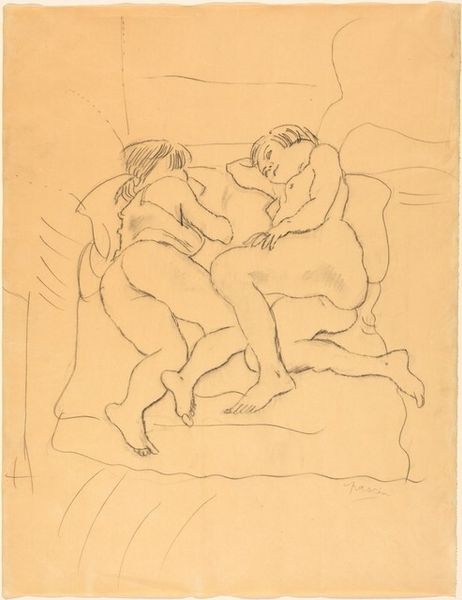
drawing
#
17_20th-century
#
drawing
#
toned paper
#
light pencil work
#
pencil sketch
#
landscape
#
personal sketchbook
#
german
#
ink drawing experimentation
#
pen-ink sketch
#
sketchbook drawing
#
portrait drawing
#
watercolour illustration
#
sketchbook art
Copyright: Public Domain
Editor: Here we have Hans Otto Peters' *Mountainscape,* a drawing likely from the early 20th century. It has this raw, sketchbook quality... almost dreamlike. What strikes me is how these figures seem to be escaping *into* nature. What do you see in this piece? Curator: I see an intimate dialogue between interiority and the external world. Consider the timeframe - the early 20th century was a period defined by rapid industrialization, burgeoning feminist movements, and anxieties about the alienation of the individual. Peters gives us these figures, seemingly at rest in a natural space. Are they finding solace, or perhaps are they confronting the male gaze, expectations and societal roles imposed on them by modernity? Editor: That’s interesting. I hadn’t thought about the female figures in that context. The sleeping one, in particular, seems vulnerable, but also powerful in her own repose. Is the mountain a kind of shield? Curator: Precisely! Think about how the depiction of nature, historically, has been gendered. Nature, like woman, is often conceived of as something to be conquered or possessed. Peters may be pushing back against that patriarchal tradition, framing the landscape not as a site of domination, but as a sanctuary, or even an extension of these women's bodies. Is the artist pointing to nature as an inherently female space of protection and agency? Editor: So, the “mountainscape” is not just scenery but an assertion of identity, too? Curator: Yes, a claim about how we situate ourselves politically and culturally within the natural world. It asks us to question the power dynamics inherent in the way we view both women and the landscape. Editor: That really reframes how I see the work! I was initially just drawn to its peacefulness, but now I see layers of meaning I hadn't considered. Thanks for your perspective. Curator: Absolutely! It is crucial to engage with how the aesthetic interacts with socio-political meaning.
Comments
No comments
Be the first to comment and join the conversation on the ultimate creative platform.
